#document management system api
Explore tagged Tumblr posts
Text
The Power of Document Management Systems for Governments and Legal Sectors
Overseeing broad documentation can be really difficult for government offices and lawful experts. A document management system API, matched with the best document management software, gives a complete answer for improve on this interaction. Customized devices like a document management system for government or a legal document management system guarantee that these basic areas can work with more prominent productivity and dependability.

What is a Document Management System API?
A Document Management System API permits consistent incorporation of report the board functionalities into existing work processes. By empowering mechanized record creation, recovery, and sharing, these APIs decrease manual exertion and further develop precision. For example, government divisions can mechanize the handling of uses, saving time and improving assistance conveyance.
Document Management System for Government: Why It’s Essential
Government organizations handle tremendous measures of information everyday, from resident records to strategy reports. A Document Management System for Government guarantees this information is put away safely, coordinated effectively, and got to rapidly when required. Highlights, for example, powerful security conventions and review trails are imperative to keeping up with public trust and guaranteeing consistency with guidelines.
Legal Document Management System: Streamlining Justice
The legitimate area is known for its weighty dependence on documentation. From agreements to court filings, the requirement for accuracy and association is central. A legal document management system gives:
Concentrated capacity for fast admittance to case records.
Joint effort instruments for groups to all the while work on reports.
High level pursuit elements to find explicit statements or terms inside extended records.
These elements improve efficiency as well as diminish the gamble of blunders that could have huge legitimate ramifications.
Government Document Management Software: Transforming Public Services
Government document management software goes past basic stockpiling. It consolidates progressed investigation, empowering offices to follow report use designs and advance cycles. Also, cloud-based arrangements guarantee that reports are available from anyplace, encouraging interdepartmental coordinated effort and supporting remote workplaces.
Picking the Best Document Management Software
While choosing the best document management software, think about the accompanying:
Adaptability: Might it at any point deal with the developing volume of archives over the long haul?
Security: Does it offer encryption, job based admittance controls, and review trails?
Incorporation: Could it at any point coordinate with existing devices and frameworks, like CRM or ERP programming?
Convenience: Is it easy to use for representatives with fluctuating degrees of specialized aptitude?
Conclusion
Putting resources into the right document management solutions is as of now not discretionary for state run administrations and legitimate experts. Whether utilizing a document management system API for incorporation, executing a document management system for government tasks, or embracing a Legal Document Management System, these instruments make ready for more prominent proficiency and dependability. With the right government document management software, public administrations can accomplish unmatched straightforwardness and administration conveyance, while lawful groups can zero in on equity as opposed to desk work. Embrace the future by picking the best document management software for your association today.
#document management system api#document management system for government#legal document management system#Government document management software#best document management software
0 notes
Text
The Best Open-Source Tools & Frameworks for Building WordPress Themes – Speckyboy
New Post has been published on https://thedigitalinsider.com/the-best-open-source-tools-frameworks-for-building-wordpress-themes-speckyboy/
The Best Open-Source Tools & Frameworks for Building WordPress Themes – Speckyboy
WordPress theme development has evolved. There are now two distinct paths for building your perfect theme.
So-called “classic” themes continue to thrive. They’re the same blend of CSS, HTML, JavaScript, and PHP we’ve used for years. The market is still saturated with and dominated by these old standbys.
Block themes are the new-ish kid on the scene. They aim to facilitate design in the browser without using code. Their structure is different, and they use a theme.json file to define styling.
What hasn’t changed is the desire to build full-featured themes quickly. Thankfully, tools and frameworks exist to help us in this quest – no matter which type of theme you want to develop. They provide a boost in one or more facets of the process.
Let’s look at some of the top open-source WordPress theme development tools and frameworks on the market. You’re sure to find one that fits your needs.
Block themes move design and development into the browser. Thus, it makes sense that Create Block Theme is a plugin for building custom block themes inside WordPress.
You can build a theme from scratch, create a theme based on your site’s active theme, create a child of your site’s active theme, or create a style variation. From there, you can export your theme for use elsewhere. The plugin is efficient and intuitive. Be sure to check out our tutorial for more info.
TypeRocket saves you time by including advanced features into its framework. Create post types and taxonomies without additional plugins. Add data to posts and pages using the included custom fields.
A page builder and templating system help you get the perfect look. The pro version includes Twig templating, additional custom fields, and more powerful development tools.
Gantry’s unique calling card is compatibility with multiple content management systems (CMS). Use it to build themes for WordPress, Joomla, and Grav. WordPress users will install the framework’s plugin and one of its default themes, then work with Gantry’s visual layout builder.
The tool provides fine-grained control over the look and layout of your site. It uses Twig-based templating and supports YAML configuration. There are plenty of features for developers, but you don’t need to be one to use the framework.
Unyson is a popular WordPress theme framework that has stood the test of time (10+ years). It offers a drag-and-drop page builder and extensions for adding custom features. They let you add sidebars, mega menus, breadcrumbs, sliders, and more.
There are also extensions for adding events and portfolio post types. There’s also an API for building custom theme option pages. It’s easy to see why this one continues to be a developer favorite.
You can use Redux to speed up the development of WordPress themes and custom plugins. This framework is built on the WordPress Settings API and helps you build full-featured settings panels. For theme developers, this means you can let users change fonts, colors, and other design features within WordPress (it also supports the WordPress Customizer).
Available extensions include color schemes, Google Maps integration, metaboxes, repeaters, and more. It’s another well-established choice that several commercial theme shops use.
Kirki is a plugin that helps theme developers build complex settings panels in the WordPress Customizer. It features a set of custom setting controls for items such as backgrounds, custom code, color palettes, images, hyperlinks, and typography.
The idea is to speed up the development of classic themes by making it easier to set up options. Kirki encourages developers to go the extra mile in customization.
Get a Faster Start On Your Theme Project
The idea of what a theme framework should do is changing. Perhaps that’s why we’re seeing a lot of longtime entries going away. It seems like the ones that survive are predicated on minimizing the use of custom code.
Developers are expecting more visual tools these days. Drag-and-drop is quickly replacing hacking away at a template with PHP. We see it happening with a few of the options in this article.
Writing custom code still has a place and will continue to be a viable option. But some frameworks are now catering to non-developers. That opens up a new world of possibilities for aspiring themers.
If your goal is to speed up theme development, then any of the above will do the trick. Choose the one that fits your workflow and enjoy the benefits of a framework!
WordPress Development Framework FAQs
What Are WordPress Development Frameworks?
They are a set of pre-built code structures and tools used for developing WordPress themes. They offer a foundational base to work from that will help to streamline the theme creation process.
Who Should Use WordPress Frameworks?
These frameworks are ideal for WordPress developers, both beginners and experienced, who want a simple, reliable, and efficient starting point for creating custom themes.
How Do Open-Source Frameworks Simplify WordPress Theme Creation?
They offer a structured, well-tested base, reducing the amount of code you need to write from scratch, which will lead to quicker development and fewer errors.
Are Open-Source Frameworks Suitable for Building Advanced WordPress Themes?
Yes, they are robust enough to support the development of highly advanced and feature-rich WordPress themes.
Do Open-Source Frameworks Offer Support and Community Input?
Being open-source, these frameworks often have active communities behind them. You can access community support, documentation, and collaborative input.
More Free WordPress Themes
Related Topics
Top
#2025#ADD#API#Article#browser#Building#change#CMS#code#collaborative#Color#colors#Community#content#content management#content management systems#CSS#custom fields#data#Design#Developer#developers#development#Development Tools#documentation#easy#Events#Experienced#extensions#Featured
0 notes
Text
i am not really interested in game development but i am interested in modding (or more specifically cheat creation) as a specialized case of reverse-engineering and modifying software running on your machine
like okay for a lot of games the devs provide some sort of easy toolkit which lets even relatively nontechnical players write mods, and these are well-documented, and then games which don't have those often have a single-digit number of highly technical modders who figure out how to do injection and create some kind of api for the less technical modders to use, and that api is often pretty well documented, but the process of creating it absolutely isn't
it's even more interesting for cheat development because it's something hostile to the creators of the software, you are actively trying to break their shit and they are trying to stop you, and of course it's basically completely undocumented because cheat developers both don't want competitors and also don't want the game devs to patch their methods....
maybe some of why this is hard is because it's pretty different for different types of games. i think i'm starting to get a handle on how to do it for this one game - so i know there's a way to do packet sniffing on the game, where the game has a dedicated port and it sends tcp packets, and you can use the game's tick system and also a brute-force attack on its very rudimentary encryption to access the raw packets pretty easily.
through trial and error (i assume) people have figured out how to decode the packets and match them up to various ingame events, which is already used in a publicly available open source tool to do stuff like DPS calculation.
i think, without too much trouble, you could probably step this up and intercept/modify existing packets? like it looks like while damage is calculated on the server side, whether or not you hit an enemy is calculated on the client side and you could maybe modify it to always hit... idk.
apparently the free cheats out there (which i would not touch with a 100 foot pole, odds those have something in them that steals your login credentials is close to 100%) operate off a proxy server model, which i assume intercepts your packets, modifies them based on what cheats you tell it you have active, and then forwards them to the server.
but they also manage to give you an ingame GUI to create those cheats, which is clearly something i don't understand. the foss sniffer opens itself up in a new window instead of modifying the ingame GUI.
man i really want to like. shadow these guys and see their dev process for a day because i'm really curious. and also read their codebase. but alas
#coding#past the point of my life where i am interested in cheating in games#but if anything i am even more interested in figuring out how to exploit systems
48 notes
·
View notes
Text
The Ultimate Developer’s Guide to STON.fi API & SDK Demo App

In the fast-paced world of blockchain and decentralized finance (DeFi), efficiency is everything. Developers don’t have time to manually configure and troubleshoot every feature from scratch. What they need is a plug-and-play solution that simplifies complex integrations while maintaining flexibility.
That’s exactly what the STON.fi API & SDK Demo App delivers. This tool isn’t just a sample—it’s a fully functional blueprint designed to help developers seamlessly integrate STON.fi’s token swap functionalities into their projects.
Whether you're an independent developer, part of a startup, or working with an established blockchain project, this demo app can save you hours of coding and debugging while ensuring a smooth user experience.
Let's break it down into why this tool matters, what it offers, and how you can make the most of it.
Why Every Developer Should Pay Attention to This Tool
Building DeFi applications requires precision, speed, and reliability. You’re dealing with real-time token swaps, liquidity pools, and user funds—there’s no room for error.
Developing a decentralized exchange (DEX) or any other blockchain application means working with smart contracts, APIs, and SDKs. The STON.fi API & SDK Demo App eliminates the complexity by providing a ready-made environment that demonstrates how STON.fi’s swap function operates in real-time.
Rather than starting from zero, developers can study, test, and integrate working solutions—accelerating their workflow and reducing risks.
Key Features That Make a Difference
The STON.fi API & SDK Demo App isn’t just a basic code snippet; it’s a structured, well-designed tool for developers looking to integrate token swaps efficiently. Here’s what makes it stand out:
1. Full-Scale Swap Functionality
The demo app provides a complete token swap system, showing exactly how transactions are executed. It includes all the necessary elements, such as price calculations, transaction confirmations, and seamless execution on the TON blockchain.
2. Clean, Modular Code for Easy Integration
Well-documented and structured code allows developers to adapt the swap function to their own projects. This modular approach makes customization straightforward, ensuring that developers don’t have to modify complex backend structures.
3. Real-Time Data & Execution
Blockchain transactions happen in real-time, so any delay or miscalculation can impact the user experience. This demo app mirrors actual trading conditions, allowing developers to test how their systems will function under real-world circumstances.
4. Compatibility Across Different DeFi Platforms
Whether you're building a DEX, a liquidity management system, or a DeFi dashboard, this app is flexible enough to fit into various use cases. Developers can integrate the swap function without restructuring their entire application.
How Developers Can Use This Tool to Their Advantage
1. Speed Up Development Time
Instead of writing swap functionalities from scratch, developers can focus on building unique features and optimizing user experience while leveraging STON.fi’s ready-made framework.
2. Reduce Errors & Improve Security
Errors in DeFi transactions can lead to financial losses or security vulnerabilities. Since the STON.fi API & SDK Demo App is already tested and optimized, integrating its features helps developers avoid common mistakes.
3. Learn & Implement Best Practices
For developers new to blockchain integrations, this demo app serves as a learning resource. Studying how STON.fi’s swap function is structured provides valuable insights into writing efficient, scalable, and secure blockchain applications.
4. Scale DeFi Projects Without Hassle
As blockchain projects grow, they need scalable, efficient, and user-friendly solutions. The STON.fi demo app ensures that token swaps remain fast and seamless, regardless of transaction volume.
Who Should Use the STON.fi API & SDK Demo App
This tool is built for a wide range of developers, including:
Blockchain Engineers – Those integrating token swaps, liquidity pools, and DeFi features into their projects.
DeFi Startups – Teams looking for efficient solutions without spending months on development.
Crypto Enthusiasts – Developers exploring blockchain functionalities and testing real-world DeFi integrations.
Tech Entrepreneurs – Anyone looking to build scalable financial applications on the TON blockchain.
Final Thoughts: A Must-Have for Blockchain Developers
For any developer working in the DeFi and blockchain space, the STON.fi API & SDK Demo App is an invaluable resource. It streamlines the process of integrating token swaps, saves development time, and ensures that applications run smoothly and efficiently.
With clear documentation, real-time execution, and a flexible framework, this tool isn’t just a demo—it’s a blueprint for success. Whether you’re building your first DeFi project or optimizing an existing platform, this resource is designed to help you get the job done faster and better.
For developers who prioritize efficiency, security, and scalability, this is a game-changing tool that simplifies one of the most critical aspects of DeFi application development.
4 notes
·
View notes
Text
Get Chatbot service for business with APIWAA
In today’s fast-paced digital world, businesses are constantly looking for innovative ways to connect with their customers more effectively and efficiently. One of the most powerful tools available to achieve this is the APIWAA. By integrating APIWAA into your business operations, you can enhance communication, improve customer service, and drive engagement to new heights.
What is APIWAA?
APIWAA is a powerful communication tool that allows businesses to integrate WhatsApp messaging into their existing systems and workflows. Unlike the standard WhatsApp Business app, the API is designed for medium to large businesses, offering scalability and a range of advanced features that streamline customer interactions. It provides a programmable interface that enables businesses to send and receive messages, automate responses, and manage communication at scale.
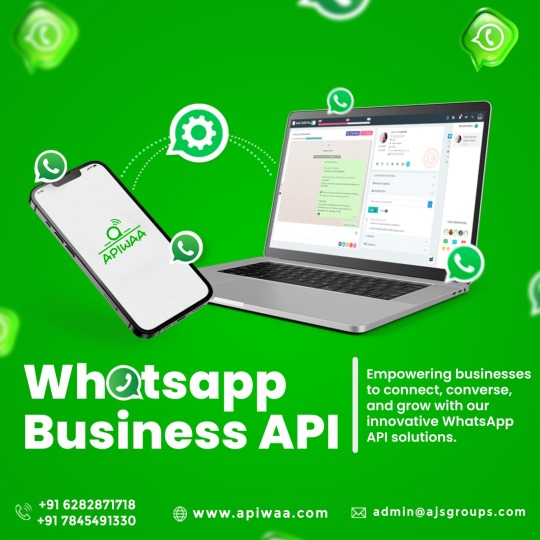
1.Enhanced Customer Communication: With APIWAA, businesses can offer real-time customer support and engagement. The ability to send instant replies to customer queries, provide order updates, and share promotional content ensures a smooth and efficient communication process. This level of responsiveness helps build trust and loyalty among customers.
2.Automation and scalability: The APIWAA allows for the automation of routine tasks, such as sending appointment reminders, order confirmations, and personalized messages based on customer interactions. This not only saves time but also ensures consistent and accurate communication. The API’s scalability means it can handle a large volume of messages simultaneously, making it ideal for businesses of all sizes.
3.Rich Media support: Unlike traditional SMS, APIWAA supports rich media messages, including images, videos, documents, and interactive buttons. This capability allows businesses to create engaging and visually appealing messages that can capture the attention of their audience more effectively.
4.Secure and Reliable: Security is a top priority for APIWAA. The platform uses end-to-end encryption to protect messages and data, ensuring that customer information remains private and secure. This level of security helps businesses comply with data protection regulations and provides peace of mind to both the business and its customers.
Use Cases: Customer Support: Provide instant responses to customer inquiries, resolve issues quickly, and offer support 24/7.
Marketing Campaigns: Send targeted promotions, offers, and updates directly to customers’ WhatsApp accounts, ensuring high open and engagement rates.
Order Notifications: Keep customers informed with real-time updates on order status, shipping details, and delivery confirmations.
Appointment Reminders: Automate appointment reminders to reduce no-shows and improve customer experience.
Conclusion: The APIWAA is a game-changer for businesses looking to enhance their communication strategy. By integrating this powerful tool, businesses can improve customer engagement, streamline operations, and ultimately drive growth. Whether you’re a small startup or a large enterprise, the APIWAA offers the flexibility and functionality needed to stay ahead in today’s competitive market. Embrace the future of communication with APIWAA and unlock your business’s full potential.
#whatsapp api#api#whatsapp marketing#apiwaa#whatsapp chatbot#healthcare chatbots market#whatsapp automation
3 notes
·
View notes
Text
What Are the Key Factors to Consider When Choosing a Payment Solution Provider?

The rapid growth of digital transactions has made choosing the right payment solution provider a crucial decision for businesses. Whether you operate an e-commerce store, a subscription-based service, or a financial institution, selecting the right provider ensures secure and efficient payment processing. With the increasing demand for fintech payment solutions, businesses must evaluate providers based on security, compatibility, scalability, and cost-effectiveness.
1. Security and Compliance
Security is the top priority when selecting a payment solution provider. Since financial transactions involve sensitive customer data, businesses must ensure that their provider follows strict security protocols. Look for providers that comply with PCI DSS (Payment Card Industry Data Security Standard) and offer encryption, tokenization, and fraud prevention measures.
A reputable provider should also offer real-time fraud detection and risk management tools to safeguard transactions. Compliance with regional regulations such as GDPR, CCPA, or PSD2 is also crucial for businesses operating in multiple locations.
2. Integration and Compatibility
Seamless Payment gateway integration is essential for a smooth transaction experience. Businesses should assess whether the provider’s APIs and SDKs are compatible with their existing platforms, including websites, mobile apps, and POS systems. A well-documented API enables easy customization and enhances the overall customer experience.
Additionally, businesses should consider whether the provider supports multiple payment methods such as credit cards, digital wallets, cryptocurrencies, and bank transfers. The ability to integrate with accounting, CRM, and ERP software is also beneficial for streamlining financial operations.
3. Cost and Pricing Structure
Understanding the pricing structure of payment solution providers is crucial for managing operational costs. Different providers offer various pricing models, including:
Flat-rate pricing – A fixed percentage per transaction
Interchange-plus pricing – A combination of network fees and provider markup
Subscription-based pricing – A fixed monthly fee with lower transaction costs
Businesses should evaluate setup fees, transaction fees, chargeback fees, and any hidden costs that may impact profitability. Opting for a transparent pricing model ensures cost-effectiveness in the long run.
4. Scalability and Performance
As businesses grow, their payment processing needs will evolve. Choosing a provider that offers scalable fintech payment solutions ensures seamless expansion into new markets and accommodates higher transaction volumes without downtime or slow processing speeds.
Look for providers with a robust infrastructure that supports high uptime, fast transaction processing, and minimal payment failures. Cloud-based payment solutions often offer better scalability and reliability for growing businesses.
5. Customer Support and Service Reliability
Reliable customer support is essential when dealing with financial transactions. Payment-related issues can result in revenue loss and customer dissatisfaction. Businesses should opt for providers that offer 24/7 customer support via multiple channels such as phone, email, and live chat.
Additionally, a provider with dedicated account management services can offer personalized solutions and proactive issue resolution, ensuring minimal disruptions to business operations.
6. Multi-Currency and Global Payment Support
For businesses targeting international markets, multi-currency support is a key consideration. The ability to accept payments in different currencies and offer localized payment methods enhances customer satisfaction and expands the business’s global reach.
Providers that support cross-border transactions with competitive exchange rates and minimal conversion fees are ideal for businesses operating in multiple countries.
7. Fintech Payment System Compatibility
A modern fintech payment system should be adaptable to emerging financial technologies. Businesses should evaluate whether the provider supports innovations like blockchain payments, real-time payment processing, and artificial intelligence-driven fraud prevention.
The ability to integrate with open banking solutions and provide seamless transaction experiences across various fintech ecosystems is becoming increasingly important in the digital payment landscape.
8. Reputation and Industry Experience
The credibility of a payment solution provider is another critical factor. Researching customer reviews, case studies, and testimonials can provide insights into the provider’s reliability and performance.
Established providers with years of experience and partnerships with reputable financial institutions are more likely to offer stable and secure payment processing services. Collaborations with fintech leaders, such as Xettle Technologies, demonstrate a provider’s commitment to innovation and excellence in payment solutions.
Conclusion
Choosing the right payment solution provider requires careful consideration of security, integration, pricing, scalability, customer support, and industry experience. Businesses must align their choice with long-term growth objectives and ensure that the provider offers secure, seamless, and cost-effective fintech payment solutions.
With the rise of digital transactions, businesses that invest in a robust fintech payment system with seamless payment gateway integration will gain a competitive edge and enhance customer trust. By partnering with reputable payment solution providers, businesses can ensure secure and efficient transaction experiences for their customers while maximizing operational efficiency.
3 notes
·
View notes
Text
WhatsApp Cloud API Setup For Botsailor
Integrating the WhatsApp Cloud API with BotSailor is crucial for businesses seeking to enhance their customer engagement and streamline communication. The WhatsApp Cloud API enables seamless automation, allowing businesses to efficiently manage interactions through chatbots, live chat, and automated messaging. By connecting with BotSailor, businesses gain access to advanced features like order message automation, webhook workflows, and integration with e-commerce platforms such as Shopify and WooCommerce. This setup not only improves operational efficiency but also offers a scalable solution for personalized customer support and marketing, driving better engagement and satisfaction.
To integrate the WhatsApp Cloud API with BotSailor, follow the steps below for setup:
1. Create an App:
Go to the Facebook Developer site.
Click "My Apps" > "Create App".
Select "Business" as the app type.
Fill out the form with the necessary information and create the app.
2. Add WhatsApp to Your App:
On the product page, find the WhatsApp section and click "Setup".
Add a payment method if necessary, and navigate to "API Setup".
3. Get a Permanent Access Token:
Go to "Business Settings" on the Facebook Business site.
Create a system user and assign the necessary permissions.
Generate an access token with permissions for Business Management, Catalog management, WhatsApp business messaging, and WhatsApp business management.
4. Configure Webhooks:
In the WhatsApp section of your app, click "Configure webhooks".
Get the Callback URL and Verify Token from BotSailor's dashboard under "Connect WhatsApp".
Paste these into the respective fields in the Facebook Developer console.
5. Add a Phone Number:
Provide and verify your business phone number in the WhatsApp section.
6. Change App Mode to Live:
Go to Basic Settings, add Privacy Policy and Terms of Service URLs, then toggle the app mode to live.
7. Connect to BotSailor:
On BotSailor, go to "Connect WhatsApp" in the dashboard.
Enter your WhatsApp Business Account ID and the access token.
Click "Connect".
For a detailed guide, refer to our documentation. YouTube tutorial. and also read Best chatbot building platform blog

3 notes
·
View notes
Text
What is Argo CD? And When Was Argo CD Established?
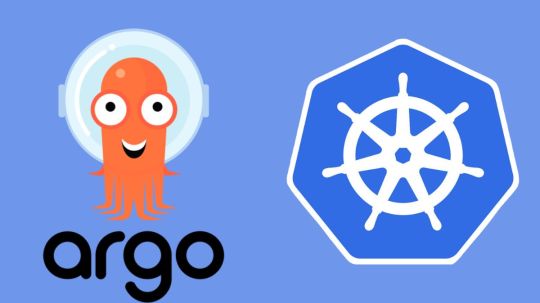
What Is Argo CD?
Argo CD is declarative Kubernetes GitOps continuous delivery.
In DevOps, ArgoCD is a Continuous Delivery (CD) technology that has become well-liked for delivering applications to Kubernetes. It is based on the GitOps deployment methodology.
When was Argo CD Established?
Argo CD was created at Intuit and made publicly available following Applatix’s 2018 acquisition by Intuit. The founding developers of Applatix, Hong Wang, Jesse Suen, and Alexander Matyushentsev, made the Argo project open-source in 2017.
Why Argo CD?
Declarative and version-controlled application definitions, configurations, and environments are ideal. Automated, auditable, and easily comprehensible application deployment and lifecycle management are essential.
Getting Started
Quick Start
kubectl create namespace argocd kubectl apply -n argocd -f https://raw.githubusercontent.com/argoproj/argo-cd/stable/manifests/install.yaml
For some features, more user-friendly documentation is offered. Refer to the upgrade guide if you want to upgrade your Argo CD. Those interested in creating third-party connectors can access developer-oriented resources.
How it works
Argo CD defines the intended application state by employing Git repositories as the source of truth, in accordance with the GitOps pattern. There are various approaches to specify Kubernetes manifests:
Applications for Customization
Helm charts
JSONNET files
Simple YAML/JSON manifest directory
Any custom configuration management tool that is set up as a plugin
The deployment of the intended application states in the designated target settings is automated by Argo CD. Deployments of applications can monitor changes to branches, tags, or pinned to a particular manifest version at a Git commit.
Architecture
The implementation of Argo CD is a Kubernetes controller that continually observes active apps and contrasts their present, live state with the target state (as defined in the Git repository). Out Of Sync is the term used to describe a deployed application whose live state differs from the target state. In addition to reporting and visualizing the differences, Argo CD offers the ability to manually or automatically sync the current state back to the intended goal state. The designated target environments can automatically apply and reflect any changes made to the intended target state in the Git repository.
Components
API Server
The Web UI, CLI, and CI/CD systems use the API, which is exposed by the gRPC/REST server. Its duties include the following:
Status reporting and application management
Launching application functions (such as rollback, sync, and user-defined actions)
Cluster credential management and repository (k8s secrets)
RBAC enforcement
Authentication, and auth delegation to outside identity providers
Git webhook event listener/forwarder
Repository Server
An internal service called the repository server keeps a local cache of the Git repository containing the application manifests. When given the following inputs, it is in charge of creating and returning the Kubernetes manifests:
URL of the repository
Revision (tag, branch, commit)
Path of the application
Template-specific configurations: helm values.yaml, parameters
A Kubernetes controller known as the application controller keeps an eye on all active apps and contrasts their actual, live state with the intended target state as defined in the repository. When it identifies an Out Of Sync application state, it may take remedial action. It is in charge of calling any user-specified hooks for lifecycle events (Sync, PostSync, and PreSync).
Features
Applications are automatically deployed to designated target environments.
Multiple configuration management/templating tools (Kustomize, Helm, Jsonnet, and plain-YAML) are supported.
Capacity to oversee and implement across several clusters
Integration of SSO (OIDC, OAuth2, LDAP, SAML 2.0, Microsoft, LinkedIn, GitHub, GitLab)
RBAC and multi-tenancy authorization policies
Rollback/Roll-anywhere to any Git repository-committed application configuration
Analysis of the application resources’ health state
Automated visualization and detection of configuration drift
Applications can be synced manually or automatically to their desired state.
Web user interface that shows program activity in real time
CLI for CI integration and automation
Integration of webhooks (GitHub, BitBucket, GitLab)
Tokens of access for automation
Hooks for PreSync, Sync, and PostSync to facilitate intricate application rollouts (such as canary and blue/green upgrades)
Application event and API call audit trails
Prometheus measurements
To override helm parameters in Git, use parameter overrides.
Read more on Govindhtech.com
#ArgoCD#CD#GitOps#API#Kubernetes#Git#Argoproject#News#Technews#Technology#Technologynews#Technologytrends#govindhtech
2 notes
·
View notes
Text
Enhancing Productivity with Notion
Written by an experienced Notion Ambassador, this book helps you become proficient with the features, functions, and flexibility of the Notion app to make work and personal life easier.
get your pdf copy : https://doten.gumroad.com/l/orqfv
Book Description
Notion is note-taking, wiki management, and task and project management software that gives you control of your working environment. By creating pages using a variety of block types and database styles, the possibilities are endless. This book will help you overcome challenges in managing large projects using Notion and creating documents using real-time updates with a great deal of flexibility, allowing everyone to have a customized view as per their needs.

What you will learn
Understand how to set up and build on any device
Navigate, share and alter the appearance of your workspace
Import and export data to and from Notion
Understand how to use all the database views, filters, sorts, and properties
Create task, wiki, and project management systems
Connect Notion to third-party applications with the API
#notion#productivity#business#money#management#learning#project#make money online#studyblr#nursing studyblr#study aesthetic#nursing student#study motivation#study blog#studyspo#study space#college#college student#university#nursing school#studying#note taking#notion inspo#notion aesthetic#notion dashboard#planning#planner addict#planner inspo#digital planner
6 notes
·
View notes
Text
What are some challenges in deploying machine learning models into production?
Deployment of machine learning models into production involves a number of challenges that have to be dealt with to make sure that the models work fine in real-world environments. These include:
Scalability:
One major challenge will be to make the machine learning model robust with respect to the volume of data it is going to process in production. This basically includes large volumes of data being processed efficiently and quickly. Most of the time, this requires run-time performance optimization of the model and infrastructural considerations of distributed computing and cloud services for scaling.
Existing System Integration:
This makes the integration of machine learning models within existing software systems or workflows quite complex. The model should play well with other components, whether it is databases, APIs, or user interfaces. Ensuring interoperability and ease in integration will require planning and testing to be taken seriously.
Model Monitoring and Maintenance:
Models in deployment should be continuously monitored to ensure that everything works as expected, tracking accuracy, latency, and error rates. Over some time, models will degrade in performance due to changes in the distribution of data or other factors. Noting such degradation regularly, it should be re-trained and updated to be effective.
Data Management:
Data pipeline management is key to the quality and consistency of the data provided to the model. This shall consist of correct collection, cleaning, and preprocessing of data. Any kinds of errors in data quality will upset the performance and reliability of the model.
Handling Model Drift:
Model drift occurs when the statistical properties of the target variable change over time, which causes a decrease in model performance. Model drift detection and handling involve the process of tracking changes in the pattern of data and updating the model accordingly in order to deal with new situations.
Security and Privacy:
This is important for the unauthorized access protection of the model and data and for compliance purposes concerning data privacy regulations. More than that, sensitive information should be secure from leaking through data breaches by putting security controls in place.
Resource Management:
Machine learning model deployment can be resource-intensive. It requires adequate computational resources for model training and inference and proper resource allocation for managing operational costs arising from running the model in production.
Performance Optimization:
The model should perform well in terms of response time and resource usage. It may need performance optimization by various techniques, such as model compression or quantization for better inference speed, or hardware accelerators. User Acceptance and Feedback:
The deployed model can expect success only through user acceptance and feedback. This would be possible if the models were user-friendly and provided actionable insights to a great extent. There is a need to get feedback from the end-users and incorporate it into model improvements so that desired outcomes can be realized.
Documentation and Transparency:
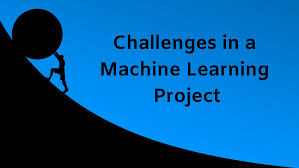
In general, there are a lot of challenges associated with deployment, including issues of scalability, integration, monitoring, data management, and security, which can be overcome only by careful planning, ongoing maintenance, and a robust deployment strategy that will ensure the model gives reliable and valuable results in the real world.
3 notes
·
View notes
Text
Everything You Need to Know About Venmo: A Detailed Guide

Venmo is a popular peer-to-peer payment service that simplifies the way we handle financial transactions. Whether you're adding funds, integrating with other payment systems, or understanding customer service options, this guide covers it all. Let’s dive into the details using some key topics and questions.
Send PayPal to Venmo
Currently, there isn't a direct way to send money from PayPal to Venmo. However, you can transfer funds between the two platforms through a linked bank account. Here’s how:
Transfer from PayPal to Bank: Move the desired amount from your PayPal balance to your linked bank account.
Transfer from Bank to Venmo: Once the funds are in your bank account, transfer them to your Venmo balance.
This method might take a few business days, but it's effective for moving money between PayPal and Venmo.
Venmo Add Funds
To add funds to your Venmo account:
Open the Venmo App: Log in to your account.
Navigate to Settings: Tap on the menu icon (☰) and select "Manage Balance."
Add Money: Tap "Add Money" and enter the amount you want to transfer.
Choose Bank Account: Select the linked bank account to transfer funds from.
Confirm: Review the details and confirm the transfer.
The funds will typically appear in your Venmo balance within 3-5 business days.
Venmo API
Venmo provides an API for developers to integrate Venmo payments into their applications. The API allows businesses to request and receive payments, handle refunds, and more. You can access the Venmo API documentation on the Venmo Developer site to get started with your integration.
Venmo Apple Pay
While Venmo and Apple Pay are separate services, you can use your Venmo card with Apple Pay. Here’s how:
Open Apple Wallet: On your iPhone, open the Wallet app.
Add Card: Tap the "+" sign to add a new card.
Enter Venmo Card Details: Either scan your Venmo card or manually enter the card information.
Verify: Follow the on-screen instructions to verify your card with Venmo.
Once added, you can use your Venmo card through Apple Pay for purchases wherever Apple Pay is accepted.
Venmo ATMs Near Me
To find ATMs that accept Venmo, follow these steps:
Use the Venmo App: Open the Venmo app and navigate to the "Venmo Card" section.
Find ATMs: Look for the "Find ATMs" option, which will help you locate ATMs nearby that accept Venmo.
Check Fees: Venmo offers free ATM withdrawals at certain ATMs (typically within the MoneyPass network). Out-of-network ATMs may charge a fee.
Venmo Call
If you need to contact Venmo customer service by phone, you can reach them at their venmo call official customer service telephone number. Visit the Venmo website or app for the venmo customer service telephone number most up-to-date contact information.
Venmo Chat
Venmo offers a chat feature for venmo chat customer support. To use Venmo chat:
Open the Venmo App: Log in and go to the menu (☰).
Select "Get Help": Tap on "Get Help" or "Contact Us."
Choose Chat Option: Select the chat option to start a conversation with a Venmo support representative.
Venmo Customer Service Telephone Number
For direct assistance, you can contact Venmo’s customer service via their official telephone number. Always refer to the Venmo website or app for the current number to ensure you reach the correct support line.
Venmo Email
To get in touch with Venmo via email, you can use their customer support email address. This can be found in the “Contact Us” section of venmo email the Venmo website or app. Email support is useful for detailed queries or issues that require documentation.
Venmo Free ATM
Venmo offers free ATM withdrawals at ATMs within the MoneyPass network. To venmo atms near me find a free ATM:
Use the Venmo App: Navigate to the "Venmo Card" section and use the "Find ATMs" feature.
MoneyPass Network: Look for ATMs that are part of the MoneyPass network to avoid withdrawal fees.
Venmo IRS
Venmo transactions may be subject to IRS reporting. If you receive $600 or more for goods and services, Venmo will issue a Form 1099-K for tax purposes. It’s important to report this income on your tax return. Consult a tax professional if you have questions about how Venmo transactions affect your taxes.
Venmo Limits Per Day
Venmo imposes certain limits on transactions:
Unverified Accounts: $299.99 per week.
Verified Accounts: Up to $4,999.99 per week for person-to-person payments and up to $6,999.99 per week for authorized merchant payments.
To increase your limits, you must verify your identity by providing personal information such as your Social Security number and date of birth.
Venmo Login for Android
To log in to Venmo on an Android device:
Download the Venmo App: Available on the Google Play Store.
Open the App: Tap the Venmo icon to open the app.
Enter Credentials: Enter your email or phone number and password.
Two-Factor Authentication: Complete any additional security steps, such as entering a verification code sent to your phone.
Once logged in, you can manage your Venmo account, send and receive payments, and more.
Conclusion
Venmo is a versatile payment platform that offers a range of features to manage your finances easily. Whether you’re adding funds, understanding limits, or contacting customer service, this guide provides all the information you need to use Venmo effectively. Stay informed and make the most out of your Venmo experience!
#venmo email#venmo chat#venmo atms near me#venmo customer service telephone number#send paypal to venmo#venmo free atm#venmo limits per day
5 notes
·
View notes
Text
Transforming Businesses with Enterprise Content Management and Document Approval Workflows in India
In the present speedy computerized scene, organizations across businesses are focusing on effective substance the board to smooth out activities and upgrade efficiency. Enterprise Content Management (ECM) has arisen as a distinct advantage, empowering associations to make due, store, and interaction immense measures of information flawlessly. Joined with robotized Document Approval Workflows, ECM enables organizations to further develop independent direction, limit postponements, and improve joint effort.
For associations in India, the requirement for streamlined Document Approval Workflows in India is developing quickly, determined by the rising interest for digitization and administrative consistency. Organizations managing complex documentation, like agreements, solicitations, or strategy endorsements, frequently face bottlenecks because of manual cycles. Document Approval Workflows dispose of these shortcomings via mechanizing staggered endorsements, guaranteeing archives arrive at the right partners quicker and with more noteworthy exactness.

Why Enterprise Content Management is Crucial
Enterprise Content Management offers a brought together stage for coordinating, getting, and circulating business-basic reports. Here are a few key advantages:
Upgraded Openness: Workers can get to archives whenever, anyplace, further developing coordinated effort and decreasing personal time.
Administrative Consistence: ECM guarantees secure capacity and review trails, assisting associations in India with consenting to neighborhood and worldwide guidelines.
Decreased Functional Expenses: By supplanting manual cycles with computerization, ECM saves time and diminishes authoritative costs.
Further developed Security: ECM stages give hearty encryption and job based admittance, protecting delicate data.
The Job of Document Approval Workflows
A basic part of ECM, Document Approval Workflows are fundamental for organizations hoping to robotize processes like buy orders, HR endorsements, and consistent documentation. These work processes digitize endorsement chains, diminishing human blunder and guaranteeing responsibility.
For instance, associations carrying out Document Approval Workflows in India can computerize endorsements for:
Receipt confirmation and installment handling
HR strategy affirmations
Buy orders and merchant the board
Benefits of Document Approval Workflows in India
Organizations in India can acquire huge benefits via robotizing record endorsements:
Quicker Time required to circle back: Mechanized work processes dispose of defers brought about by manual surveys.
Expanded Straightforwardness: Continuous following guarantees perceivability at every endorsement stage.
Mistake Decrease: Normalized work processes limit the gamble of absent or erroneous endorsements.
Versatility: Work processes can adjust to developing organizations, dealing with bigger volumes of reports easily.
How ECM and Document Workflows Work Together
When joined, Enterprise Content Management and Document Approval Workflows make a consistent biological system for overseeing and handling information. ECM fills in as the spine for content capacity, while work processes computerize errands like endorsements, notices, and accelerations. This incorporation drives effectiveness, empowering groups to zero in on essential drives rather than routine desk work.
Picking the Right Solution
With various ECM Solutions accessible, organizations ought to focus on stages that proposition:
Easy to understand interfaces
Powerful work process robotization abilities
Coordination with existing frameworks
Versatility to help development
Conclusion
As organizations in India embrace advanced change, taking on Enterprise Content Management and Document Approval Workflows is presently not discretionary — it's fundamental. Via robotizing processes and streamlining report the executives, associations can further develop efficiency, diminish expenses, and remain ahead in a serious market. Whether you are a little undertaking or an enormous company, executing Document Approval Workflows in India will open more noteworthy proficiency and accomplishment for your business.
Begin your excursion toward more astute archive executives today and experience the groundbreaking force of ECM and work process computerization.
#enterprise content management#Document Approval Workflows In India#document management system api#best document management software#document approval workflows#document security and compliance
0 notes
Text
Quality Assurance (QA) Analyst - Tosca
Model-Based Test Automation (MBTA):
Tosca uses a model-based approach to automate test cases, which allows for greater reusability and easier maintenance.
Scriptless Testing:
Tosca offers a scriptless testing environment, enabling testers with minimal programming knowledge to create complex test cases using a drag-and-drop interface.
Risk-Based Testing (RBT):
Tosca helps prioritize testing efforts by identifying and focusing on high-risk areas of the application, improving test coverage and efficiency.
Continuous Integration and DevOps:
Integration with CI/CD tools like Jenkins, Bamboo, and Azure DevOps enables automated testing within the software development pipeline.
Cross-Technology Testing:
Tosca supports testing across various technologies, including web, mobile, APIs, and desktop applications.
Service Virtualization:
Tosca allows the simulation of external services, enabling testing in isolated environments without dependency on external systems.
Tosca Testing Process
Requirements Management:
Define and manage test requirements within Tosca, linking them to test cases to ensure comprehensive coverage.
Test Case Design:
Create test cases using Tosca’s model-based approach, focusing on functional flows and data variations.
Test Data Management:
Manage and manipulate test data within Tosca to support different testing scenarios and ensure data-driven testing.
Test Execution:
Execute test cases automatically or manually, tracking progress and results in real-time.
Defect Management:
Identify, log, and track defects through Tosca’s integration with various bug-tracking tools like JIRA and Bugzilla.
Reporting and Analytics:
Generate detailed reports and analytics on test coverage, execution results, and defect trends to inform decision-making.
Benefits of Using Tosca for QA Analysts
Efficiency: Automation and model-based testing significantly reduce the time and effort required for test case creation and maintenance.
Accuracy: Reduces human error by automating repetitive tasks and ensuring consistent execution of test cases.
Scalability: Easily scales to accommodate large and complex testing environments, supporting continuous testing in agile and DevOps processes.
Integration: Seamlessly integrates with various tools and platforms, enhancing collaboration across development, testing, and operations teams.
Skills Required for QA Analysts Using Tosca
Understanding of Testing Principles: Fundamental knowledge of manual and automated testing principles and methodologies.
Technical Proficiency: Familiarity with Tosca and other testing tools, along with basic understanding of programming/scripting languages.
Analytical Skills: Ability to analyze requirements, design test cases, and identify potential issues effectively.
Attention to Detail: Keen eye for detail to ensure comprehensive test coverage and accurate defect identification.
Communication Skills: Strong verbal and written communication skills to document findings and collaborate with team members.

2 notes
·
View notes
Text
Murf AI is a text-to-speech (TTS) platform that leverages advanced AI technology to generate high-quality, natural-sounding voices for a variety of applications. It is designed to cater to the needs of content creators, marketers, educators, and businesses looking to produce audio content efficiently. Below is a detailed review of its features and functionalities:
Key Features
Voice Variety and Quality:
Voice Options: Murf AI offers a wide selection of voices across different languages, accents, and tones, allowing users to choose the most appropriate voice for their content.
Natural Sounding: The voices generated by Murf AI are known for their natural and human-like quality, which enhances the listening experience.
Customization and Control:
Voice Customization: Users can adjust pitch, speed, and volume to tailor the voice output to their specific needs.
Pronunciation Control: The platform allows for fine-tuning of pronunciation, ensuring accurate and context-appropriate speech.
Ease of Use:
User-Friendly Interface: The platform features an intuitive interface that makes it easy for users to input text, select voices, and adjust settings.
Script Import: Users can import scripts in various formats (such as text, PDF, or Word documents), streamlining the process of generating voiceovers.
Advanced Editing Tools:
Voice Cloning: Murf AI offers voice cloning capabilities, allowing users to create custom voices that mimic specific individuals (subject to appropriate permissions and ethical considerations).
Multi-Voice Projects: Users can create projects that use multiple voices, enabling complex dialogues and varied presentations within a single piece of content.
Integration and API:
API Access: The platform provides API access for developers, enabling integration with other applications and workflows for automated TTS generation.
Third-Party Integrations: Murf AI integrates with various tools and platforms, such as video editing software and content management systems, enhancing its functionality and ease of use.
Applications and Use Cases:
Content Creation: Ideal for creating voiceovers for videos, podcasts, audiobooks, and e-learning materials. Marketing and Advertising: Used for creating engaging audio advertisements and promotional content.
Accessibility: Helps in generating audio content for visually impaired individuals and making digital content more accessible. Pros
High-Quality Voices: The natural and human-like voices make audio content more engaging and professional.
Wide Range of Voices: The variety of voices and languages caters to a global audience and diverse content needs.
Customization Features: Advanced customization options allow for precise control over voice output.
User-Friendly Interface: The intuitive design makes it easy to create and edit audio content without technical expertise.
Integration Capabilities: API access and third-party integrations enhance workflow efficiency and automation.
Cons
Cost: The pricing for premium features and extensive usage can be higher compared to some other TTS platforms, which may be a consideration for small businesses or individual users.
Learning Curve for Advanced Features: While basic features are easy to use, mastering advanced features like voice cloning and multi-voice projects may require some learning and experimentation.
Limited Free Tier: The free tier offers limited access to voices and features, which may not be sufficient for users needing more extensive capabilities.
Murf AI is a robust and versatile text-to-speech platform that excels in generating high-quality, natural-sounding voices. Its extensive customization options, wide range of voices, and user-friendly interface make it an excellent choice for content creators, marketers, educators, and businesses. While the cost and learning curve for advanced features may pose challenges for some users, the overall functionality and integration capabilities provide significant value. Murf AI stands out as a powerful tool for producing professional and engaging audio content.
4 notes
·
View notes
Text
Top 10 Front-End Frameworks and Libraries for 2024
As the web development landscape continues to evolve, staying updated with the latest front-end frameworks and libraries is crucial for any developer. Whether you're a seasoned pro or just starting out, knowing which tools to use can significantly impact your productivity and the quality of your projects. In this post, we’ll explore the top 10 front-end frameworks and libraries that are set to dominate in 2024.
1. React
React remains one of the most popular front-end libraries, known for its simplicity and flexibility.
Key Features of React
Component-Based Architecture: Reusable components make development efficient and manageable.
Virtual DOM: Enhances performance by minimizing direct DOM manipulation.
Strong Community Support: A vast ecosystem of tools, libraries, and tutorials.
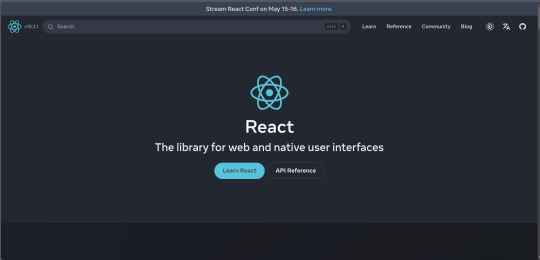
2. Angular
Angular, backed by Google, is a powerful framework for building dynamic single-page applications (SPAs).
Why Choose Angular?
Two-Way Data Binding: Synchronizes data between the model and the view.
Dependency Injection: Improves code maintainability and testability.
Comprehensive Documentation: Extensive resources for learning and troubleshooting.
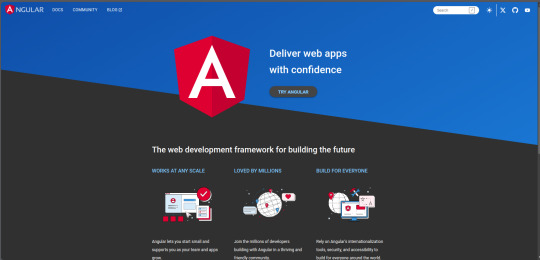
3. Vue.js
Vue.js has gained popularity due to its gentle learning curve and versatility.
Advantages of Vue.js
Reactive Data Binding: Simplifies state management.
Single-File Components: Encapsulate HTML, CSS, and JavaScript in one file.
Flexibility: Can be used for both large-scale and small-scale applications.
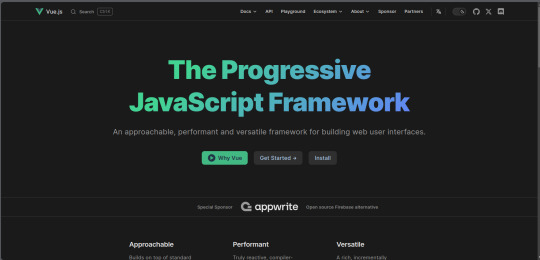
4. Svelte
Svelte is a relatively new player that compiles components into highly efficient vanilla JavaScript at build time.
Svelte’s Standout Features
No Virtual DOM: Directly manipulates the DOM for better performance.
Less Boilerplate: Cleaner code with minimal overhead.
Ease of Use: Intuitive and straightforward syntax.
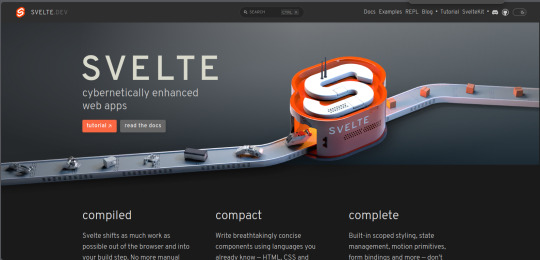
5. Bootstrap
Bootstrap is a front-end framework that provides pre-designed components and a responsive grid system.
Benefits of Using Bootstrap
Responsive Design: Ensures your site looks great on all devices.
Pre-Styled Components: Saves time with ready-to-use UI elements.
Customizable: Easily customize with Sass variables and Bootstrap’s extensive options.
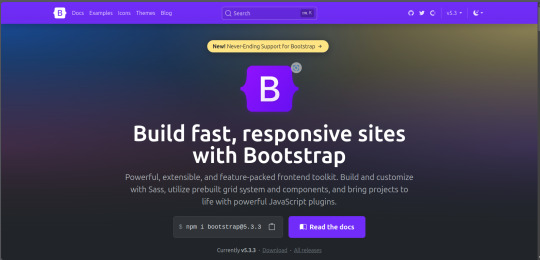
6. Tailwind CSS
Tailwind CSS is a utility-first CSS framework that allows for rapid UI development.
Tailwind CSS Features
Utility-First Approach: Use utility classes directly in your HTML.
Customizable: Extensive configuration options to suit your project’s needs.
Consistency: Enforces a consistent design language across your project.

7. Ember.js
Ember.js is a robust framework for building ambitious web applications.
Why Ember.js Stands Out
Convention over Configuration: Reduces the amount of decision-making and boilerplate code.
Strong Routing: Powerful routing capabilities for managing application state.
Productivity: Focuses on developer productivity with built-in best practices.
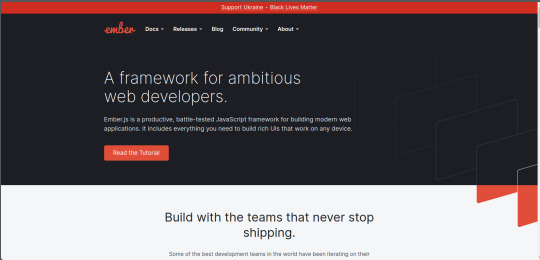
8. Alpine.js
Alpine.js offers a minimal and lightweight way to add interactivity to your websites.
Key Features of Alpine.js
Lightweight: Small footprint with only a few kilobytes.
Declarative Syntax: Similar to Vue.js, making it easy to understand and implement.
Ease of Integration: Can be easily integrated into existing projects.
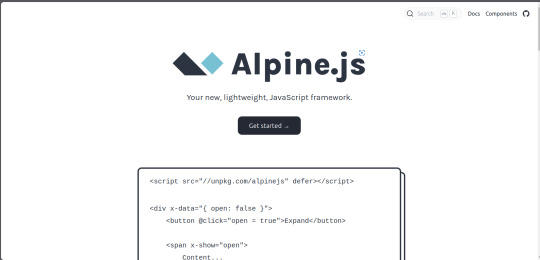
9. Next.js
Next.js is a popular React framework that enables server-side rendering and static site generation.
Benefits of Using Next.js
Server-Side Rendering (SSR): Improves performance and SEO by rendering pages on the server.
Static Site Generation (SSG): Pre-renders pages at build time for fast load times.
API Routes: Allows you to create API endpoints within your application.

10. Lit
Lit is a simple library for building fast, lightweight web components.
Advantages of Lit
Web Components: Embraces the web components standard for reusable, encapsulated HTML elements.
Performance: Lightweight and highly performant.
Simple API: Easy to learn and use with a minimal API surface.
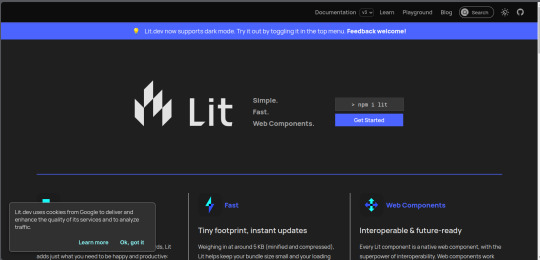
Conclusion
Choosing the right front-end framework or library can significantly impact your workflow and the quality of your projects. Whether you prefer the flexibility of React, the structure of Angular, or the simplicity of Svelte, there's a tool out there to suit your needs.
Final Tips for Selecting a Framework or Library
Project Requirements: Consider the specific needs of your project.
Community and Support: Look for frameworks with strong community support and documentation.
Learning Curve: Choose a tool that matches your current skill level and the time you have available to learn.
By staying informed about the latest tools and trends, you can ensure that your skills remain relevant and that you can deliver the best possible results in your projects. Happy coding!
Remember, the best tool is the one that helps you get the job done efficiently and effectively. So, dive into these frameworks and libraries, and take your front-end development skills to the next level!
Share Your Thoughts
I'm curious to know your thoughts on these front-end frameworks and libraries. Have you used any of them in your projects? Which one is your favorite, and why? Share your experiences and insights in the comments below.👇
2 notes
·
View notes
Text
Exploring Essential Laravel Development Tools for Building Powerful Web Applications
Laravel has emerged as one of the most popular PHP frameworks, providing builders a sturdy and green platform for building net packages. Central to the fulfillment of Laravel tasks are the development tools that streamline the improvement process, decorate productiveness, and make certain code quality. In this article, we will delve into the best Laravel development tools that each developer should be acquainted with.
1 Composer: Composer is a dependency manager for PHP that allows you to declare the libraries your project relies upon on and manages them for you. Laravel itself relies closely on Composer for package deal management, making it an essential device for Laravel builders. With Composer, you may without problems upload, eliminate, or update applications, making sure that your Laravel project stays up-to-date with the present day dependencies.
2 Artisan: Artisan is the command-line interface blanketed with Laravel, presenting various helpful instructions for scaffolding, handling migrations, producing controllers, models, and plenty extra. Laravel builders leverage Artisan to automate repetitive tasks and streamline improvement workflows, thereby growing efficiency and productiveness.
3 Laravel Debugbar: Debugging is an crucial component of software program development, and Laravel Debugbar simplifies the debugging procedure by using supplying exact insights into the application's overall performance, queries, views, and greater. It's a accessible device for identifying and resolving problems all through improvement, making sure the clean functioning of your Laravel application.
4 Laravel Telescope: Similar to Laravel Debugbar, Laravel Telescope is a debugging assistant for Laravel programs, presenting actual-time insights into requests, exceptions, database queries, and greater. With its intuitive dashboard, developers can monitor the software's behavior, pick out performance bottlenecks, and optimize hence.
5 Laravel Mix: Laravel Mix offers a fluent API for outlining webpack build steps on your Laravel application. It simplifies asset compilation and preprocessing duties together with compiling SASS or LESS documents, concatenating and minifying JavaScript documents, and dealing with versioning. Laravel Mix significantly streamlines the frontend improvement procedure, permitting builders to attention on building notable consumer reviews.
6 Laravel Horizon: Laravel Horizon is a dashboard and configuration system for Laravel's Redis queue, imparting insights into process throughput, runtime metrics, and more. It enables builders to monitor and control queued jobs efficiently, ensuring most beneficial performance and scalability for Laravel programs that leverage history processing.
7 Laravel Envoyer: Laravel Envoyer is a deployment tool designed specifically for Laravel packages, facilitating seamless deployment workflows with 0 downtime. It automates the deployment process, from pushing code adjustments to more than one servers to executing deployment scripts, thereby minimizing the chance of errors and ensuring smooth deployments.
8 Laravel Dusk: Laravel Dusk is an cease-to-give up browser testing tool for Laravel applications, built on pinnacle of the ChromeDriver and WebDriverIO. It lets in builders to put in writing expressive and dependable browser assessments, making sure that critical user interactions and workflows function as expected across exceptional browsers and environments.
9 Laravel Valet: Laravel Valet gives a light-weight improvement surroundings for Laravel applications on macOS, offering seamless integration with equipment like MySQL, NGINX, and PHP. It simplifies the setup process, permitting developers to consciousness on writing code instead of configuring their development environment.
In end, mastering the vital Laravel development tools noted above is important for building robust, green, and scalable internet packages with Laravel. Whether it's handling dependencies, debugging troubles, optimizing overall performance, or streamlining deployment workflows, those equipment empower Laravel developers to supply outstanding answers that meet the demands of current internet development. Embracing these gear will certainly increase your Laravel improvement enjoy and accelerate your journey toward turning into a talented Laravel developer.
3 notes
·
View notes